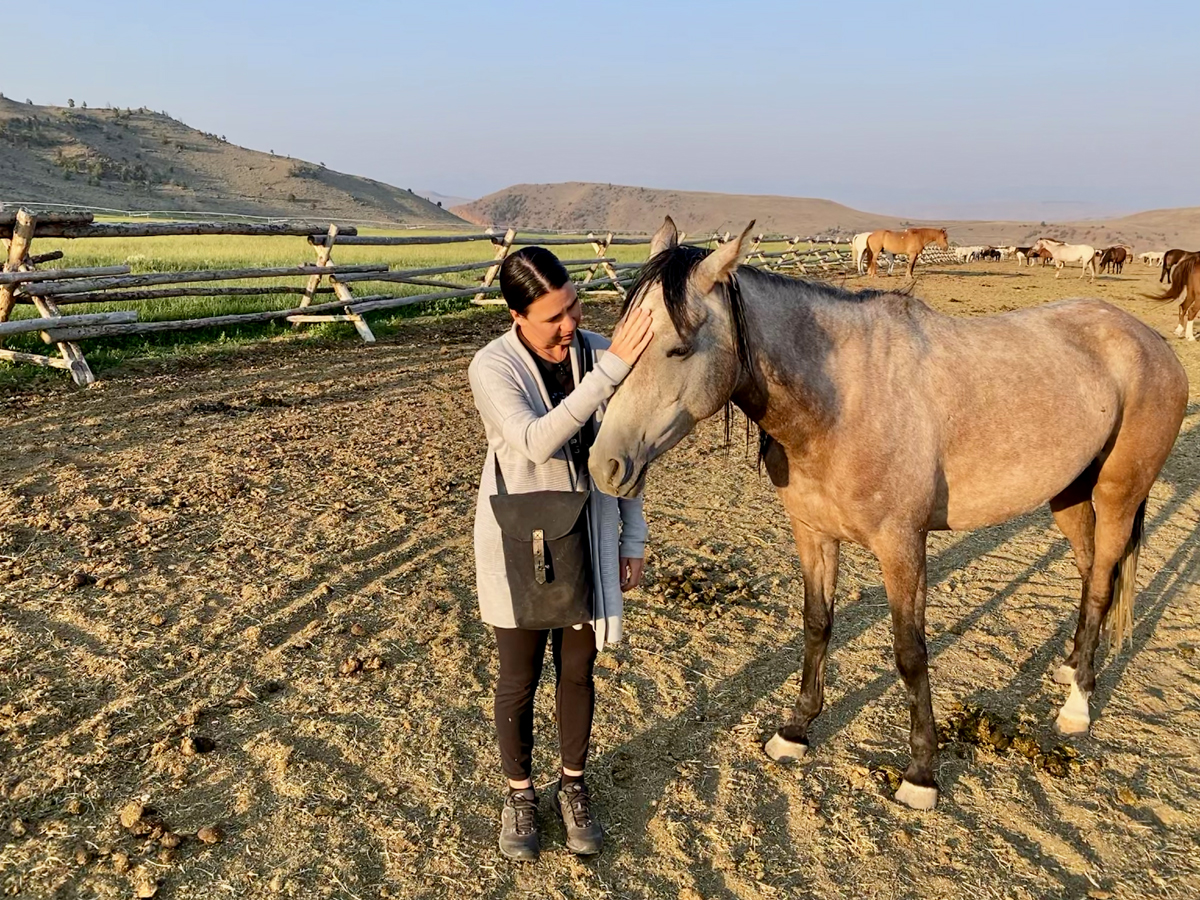Are you looking to find a deeper sense of peace and connection? Well, look no further than the world of horseback riding. In this article, we will explore the powerful connection between horseback riding and mindfulness. Whether you’re a seasoned equestrian or someone who has never set foot in a stable, you’ll discover how this ancient practice can help you cultivate presence, foster a sense of calm, and bring you closer to nature. So saddle up, relax, and get ready to embark on a journey that will not only improve your horsemanship skills but also nurture your mind and soul.

The Benefits of Horseback Riding
Horseback riding is not only a fun and exhilarating activity, but it also offers numerous benefits for both the mind and body. Whether you’re a seasoned rider or just starting out, the practice of horseback riding can have a transformative effect on your overall well-being. In this article, we will explore some of the key benefits of horseback riding and how it can enhance mindfulness, boost confidence, reduce stress, and promote physical fitness and coordination.
Improves Mindfulness and Mental Clarity
Mindfulness is the practice of being fully present in the moment, without judgment or distraction. Horseback riding naturally lends itself to mindfulness by requiring your full attention and focus. As you ride, you become attuned to the rhythm of the horse’s movements, the sensation of the saddle beneath you, and the sounds and sights of your surroundings. This heightened awareness helps to quiet the mind and improve mental clarity.
Enhances Emotional Well-being
Spending time with horses can have a profound impact on your emotional well-being. Horses are known for their gentle and empathetic nature, and they have a unique ability to sense and respond to your emotions. The bond that develops between rider and horse can provide a source of comfort, support, and companionship. Interacting with these majestic animals can help reduce feelings of loneliness, anxiety, and depression, and promote a sense of joy and emotional fulfillment.
Boosts Confidence and Self-esteem
Horseback riding requires a certain level of skill and coordination, and mastering the art of riding can be a significant confidence booster. As you develop a deeper understanding of the horse’s movements and learn to communicate effectively, your self-esteem grows. The sense of accomplishment that comes with each successful ride or new skill learned can have a positive impact on other areas of your life as well.
Reduces Stress and Anxiety
In today’s busy and fast-paced world, finding activities that help reduce stress and anxiety is essential. Horseback riding offers a therapeutic escape from everyday pressures, allowing you to immerse yourself in the present moment and let go of worries and stressors. The rhythmic motion of the horse, combined with the peaceful environment of nature, creates a calming effect on both the body and mind. Spending time in nature has been proven to lower cortisol levels and reduce stress, and horseback riding provides the perfect opportunity to reconnect with nature and find inner peace.
Promotes Physical Fitness and Coordination
Horseback riding is not just a leisurely activity; it also offers a full-body workout. As you ride, you engage and strengthen your core muscles, including your abdominals, back, and pelvic muscles, as you balance and stabilize yourself in the saddle. Additionally, riding requires coordination and control of your body movements, which helps improve overall motor skills and balance. Regular horseback riding can also contribute to improved cardiovascular fitness, as it increases your heart rate and promotes blood circulation.
The Link Between Horseback Riding and Mindfulness
Horseback riding and mindfulness are closely intertwined, as both practices emphasize the importance of being present in the moment and developing a deep connection with oneself and the environment.
The Mind-Body Connection
Horseback riding is a unique activity that bridges the gap between physical and mental well-being. The movement of the horse’s body stimulates your own body’s responses, creating a deep sense of connection and harmony. This mind-body connection allows you to become more attuned to your own thoughts, emotions, and physical sensations, fostering a sense of balance and unity.
Focus and Presence in the Moment
When you are on horseback, your attention naturally shifts to the present moment. You must be fully present and focused on the horse’s movements, as well as your own body positioning and balance. This heightened focus helps to quiet the mind and alleviate distractions, allowing you to experience a state of flow and complete immersion in the present moment.
Synchronizing Movements and Breathing
In order to achieve harmony and communication with the horse, riders must synchronize their movements and breathing. As you ride, you become deeply aware of the subtle cues and shifts in your body, and you learn to breathe in rhythm with the horse’s movements. This synchronization of breath and movement further enhances the mind-body connection and promotes a sense of unity and peace.
Developing Trust and Connectivity
Horseback riding requires a deep level of trust and connectivity between rider and horse. The horse is highly intuitive and responsive to your emotions and intentions, and in turn, you must trust the horse to carry you safely and respond to your cues. This bond of trust and connectivity fosters a sense of mutual respect and understanding, deepening the connection between rider and horse.
Mindfulness Techniques in Horseback Riding
Incorporating mindfulness techniques into your horseback riding practice can further enhance the benefits and deepen your overall experience. Here are some mindfulness techniques that can be implemented while riding:
Breathing Exercises
Conscious breathing is a fundamental aspect of mindfulness. While riding, take a few moments to focus on your breath. Inhale deeply, feeling your lungs expand, and exhale slowly, releasing any tension or stress. Use your breath to anchor yourself in the present moment and maintain a sense of calm and awareness.
Body Scanning
A body scan is a simple mindfulness technique that involves bringing your attention to different parts of your body and noticing any sensations or tension. While riding, conduct a mental scan of your body, starting from your head and moving down to your toes. Notice any areas of tension or discomfort and consciously release and relax those areas.
Visualizations
Visualizations can help you stay present and focused while riding. Imagine yourself and your horse as a unified entity, moving gracefully and effortlessly. Visualize a calm and peaceful environment around you, and let go of any distracting thoughts or worries. Engaging in positive visualizations can enhance your riding experience and promote a sense of tranquility.
Meditation
Meditation is a powerful mindfulness practice that can be incorporated into your horseback riding routine. Before mounting your horse or after dismounting, find a quiet and peaceful spot to sit or stand. Close your eyes and bring your attention to your breath or a specific focus point. Allow any thoughts or distractions to pass without judgment, and simply be fully present in the moment.
Grounding Techniques
Grounding techniques involve bringing your attention to your body and the sensations of contact with the earth. Before and after your ride, take a few moments to stand or walk barefoot on the ground, feeling the earth beneath your feet. Notice the sensation of the ground supporting your weight and allow yourself to feel rooted and connected.
Mindful Horsemanship: Creating a Connection
To fully experience the benefits of horseback riding, it is important to cultivate a mindful approach to horsemanship. This involves understanding the horse’s perspective, building trust and mutual respect, communicating non-verbally, and listening to the horse’s cues.
Understanding the Horse’s Perspective
Horses are highly sensitive animals and have their own unique experiences and perspectives. Take the time to learn about horse behavior and psychology, and understand how they perceive the world around them. This understanding will enable you to approach horsemanship with empathy and respect, creating a stronger connection with your horse.
Building Trust and Mutual Respect
Trust is the foundation of any successful relationship, including the one between rider and horse. Building trust takes time and patience, but it is essential for a harmonious partnership. Treat your horse with kindness and consistency, and avoid using force or fear-based training methods. Through positive reinforcement and clear communication, you can develop a bond based on trust and mutual respect.
Communicating Non-Verbally
Horses are incredibly perceptive when it comes to non-verbal communication. Practice being mindful of your body language and energy while interacting with your horse. Use gentle, clear cues to convey your intentions, and be aware of the horse’s responses. By communicating non-verbally, you can establish a deeper connection and create a more harmonious riding experience.
Listening to the Horse’s Cues
Horses communicate through subtle cues and body language. Pay close attention to your horse’s movements, facial expressions, and overall demeanor. Notice any signs of discomfort, stress, or relaxation, and respond accordingly. By actively listening to your horse, you can better understand their needs and ensure their well-being during the riding process.
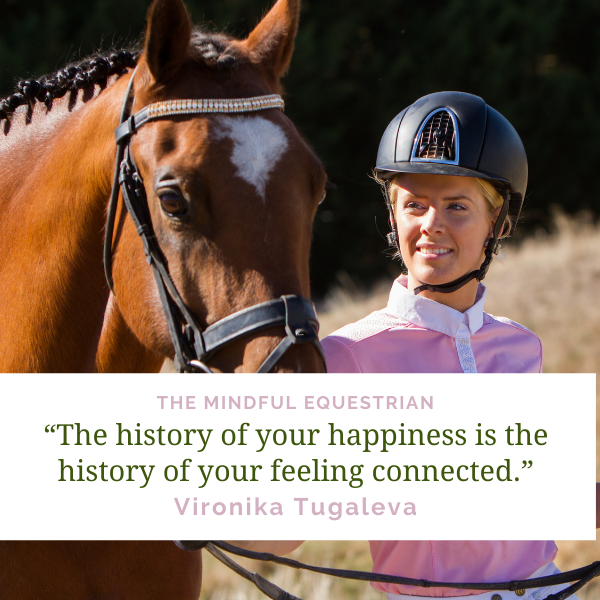
Benefits for the Rider’s Mind
Engaging in horseback riding with a mindful approach can have numerous positive effects on the rider’s mental well-being.
Increased Focus and Concentration
Mindful horseback riding requires focused attention and concentration. By consistently practicing mindfulness while riding, you can strengthen your ability to stay present and focused in other areas of life. This heightened focus can enhance productivity, improve memory, and boost overall cognitive function.
Improved Emotional Regulation
Horseback riding offers a safe and supportive space to explore and regulate your emotions. The bond with the horse and the rhythmic movements can help release tension and promote emotional release. As you become more attuned to your own emotions while riding, you can develop healthier coping mechanisms and improve emotional regulation in everyday life.
Greater Resilience and Patience
Horseback riding can teach valuable lessons in resilience and patience. As a rider, you may face challenges, setbacks, and moments of frustration. However, through a mindful approach, you can cultivate resilience and learn to embrace these challenges as opportunities for growth. Patience is also essential when working with horses, as building trust and developing skills takes time. The practice of mindfulness can enhance your ability to stay patient, resilient, and adaptable in the face of difficulties.
Heightened Intuition
Horseback riding requires you to rely on your intuition and instincts. By practicing mindfulness, you can tap into your inner wisdom and develop a deeper connection with your own intuition. As you become more in tune with your own body and emotions, you can better understand the messages and cues that arise while riding. This heightened intuition can extend beyond the saddle and positively impact your decision-making and problem-solving skills in all areas of life.
Benefits for the Rider’s Body
In addition to the mental benefits, horseback riding also offers numerous physical benefits for the rider’s body.
Improved Balance and Posture
Maintaining balance and good posture is essential while riding. The movement of the horse forces riders to engage their core muscles and stabilize their bodies. Over time, this constant engagement leads to improved balance, coordination, and overall posture. Good posture promotes proper alignment of the spine, reduces back pain, and enhances overall body mechanics.
Strengthening Core Muscles
Horseback riding is a great way to strengthen your core muscles, including the abdominals, back, and pelvic muscles. These muscles are actively engaged while riding to help maintain stability and balance in the saddle. Regular riding can strengthen and tone these muscles, leading to improved core strength, stability, and overall body strength.
Enhanced Flexibility and Range of Motion
The movement of the horse, particularly during different gaits, requires riders to be flexible and adaptable. As you ride, you naturally move with the horse’s motion, which helps improve flexibility and range of motion in your hips, legs, and spine. Regular riding can contribute to increased flexibility, making everyday movements and activities easier and more comfortable.
Improved Coordination and Motor Skills
Horseback riding involves coordinated movements of the whole body, and this constant coordination helps improve overall motor skills. As you learn to synchronize your movements with the horse’s, your coordination and proprioception (awareness of your body in space) improve. This enhanced coordination can have a positive impact on your overall physical abilities, both on and off the horse.
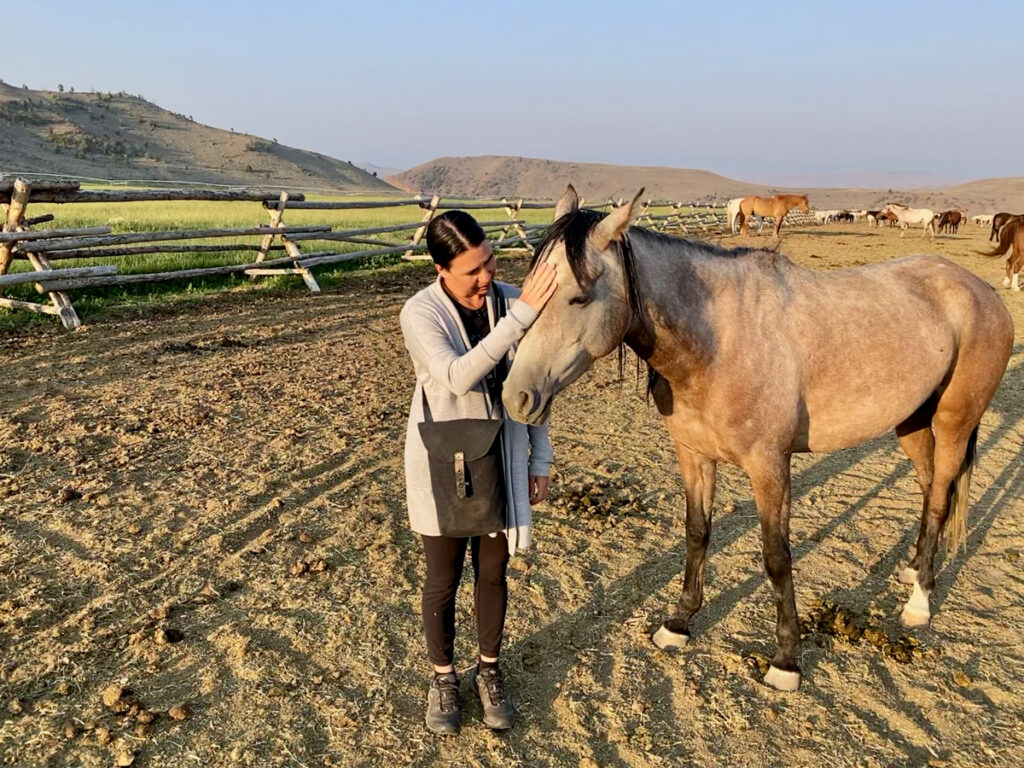
Horseback Riding as a Mindful Practice
Horseback riding can be more than just a recreational activity; it can also be a mindful practice in itself. The principles of mindfulness can be applied to different riding styles, disciplines, and even therapeutic riding.
Different Riding Styles and Disciplines
Whether you prefer Western or English riding, dressage or jumping, each riding style offers its own unique benefits and opportunities for mindfulness. Embrace the specific techniques and traditions of your chosen discipline, and use them as a way to deepen your mindfulness practice. By focusing on the details and nuances of your chosen style, you can enhance your overall riding experience.
The Role of Groundwork and Horsemanship
Groundwork and horsemanship are integral parts of horseback riding and offer a wealth of opportunities for mindfulness. Engaging in groundwork exercises, such as leading, lunging, and liberty work, can help develop a deeper bond and understanding with your horse. Incorporating mindfulness into these exercises can enhance your communication, deepen your connection, and improve your overall horsemanship skills.
Mindfulness in Competitive Riding
Competitive riding can be highly demanding, both physically and mentally. Mindfulness techniques can be particularly beneficial in competition settings, helping riders stay focused, calm, and present under pressure. By incorporating mindfulness into your training and preparation, you can enhance your performance and enjoy the competitive experience with a greater sense of peace and joy.
Therapeutic Riding and Mental Health Benefits
Therapeutic riding programs have long recognized the mental health benefits of horseback riding. Riding can be particularly therapeutic for individuals experiencing mental health challenges such as anxiety, depression, PTSD, and ADHD. The mindful and empathetic nature of the horse, combined with the nurturing environment of a therapeutic program, can provide a safe and supportive space for healing and personal growth.
Mindful Riding: Tips and Techniques
To make the most of your mindful horseback riding experience, consider implementing the following tips and techniques:
Creating a Safe and Supportive Environment
Ensure that both you and the horse are in a safe and supportive environment before beginning your ride. Take the time to prepare yourself mentally and emotionally, and ensure that the horse is in good health and conditioned for the ride. A safe and supportive environment sets the foundation for a positive and mindful riding experience.
Setting Intention and Focus
Before mounting your horse, take a moment to set a mindful intention for your ride. What do you hope to achieve or experience? What emotions or sensations do you want to cultivate? Set a clear intention and carry it with you throughout the ride. Maintain a focused mind and let go of any distractions or worries.
Being Present with the Horse’s Movements
As you ride, stay fully present and attuned to the horse’s movements. Feel the rhythm of the horse’s gait, the gentle sway of its body, and the sensation of the saddle beneath you. Be aware of your own body positioning and balance, and adjust as necessary. By immersing yourself in the present moment, you can fully appreciate the experience of riding.
Using Mindfulness during Challenges
Challenges and obstacles can arise while riding, whether it’s navigating a difficult trail or mastering a new skill. Instead of becoming frustrated or overwhelmed, approach these challenges with a mindful mindset. Take a deep breath, stay present, and trust your instincts. Embrace the opportunity for growth and learning, and remember to be kind and patient with yourself and your horse.
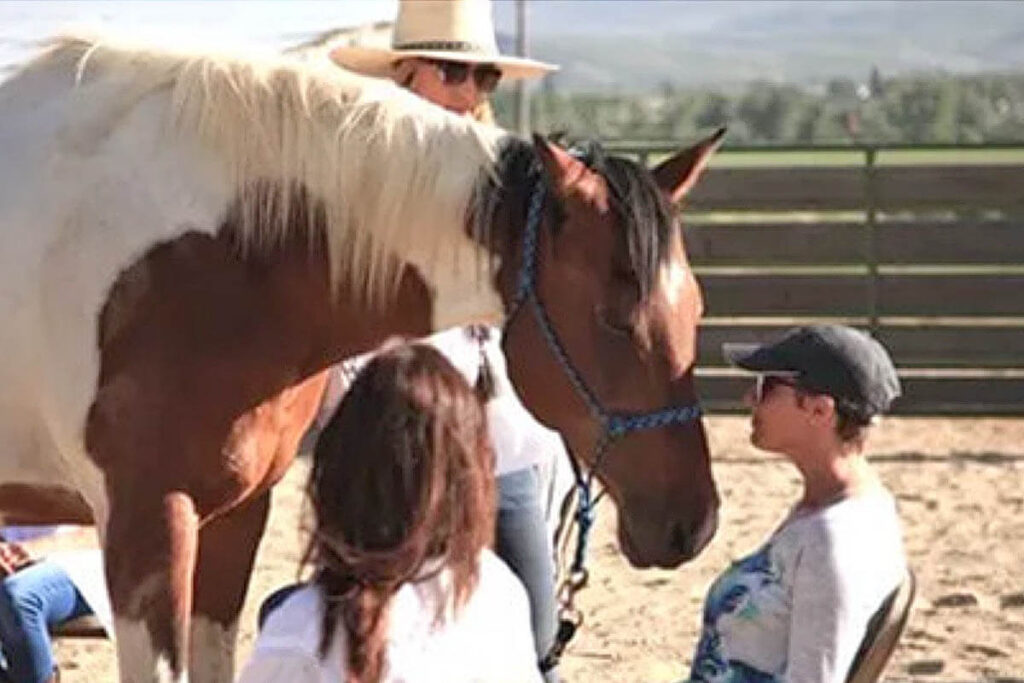
Mindfulness Activities with Horses
Aside from riding, there are various mindfulness activities you can engage in to deepen your connection with horses:
Brushing and Grooming
Take the time to interact with your horse through brushing and grooming. This activity not only helps keep the horse clean and comfortable but also allows for a calming and meditative experience. Focus on the sensations of each stroke, the bond between you and the horse, and the connection you share.
Leading and Bonding Exercises
Engage in leading and bonding exercises to strengthen your connection with your horse. These exercises can include leading the horse through different obstacles, performing liberty work, or simply walking side by side in harmony. Use these moments to be fully present, observe the horse’s cues, and deepen your trust and bond.
Trail Riding and Nature Connection
Explore the beauty of nature through trail riding. Whether it’s a peaceful ride through a tranquil forest or an adventurous gallop across a scenic landscape, trail riding offers an opportunity for a deeper connection with nature. Immerse yourself in the sights, sounds, and smells of the environment, and feel the rhythm of the horse as you journey together.
Obstacle Courses and Problem-Solving
Engage in obstacle courses and problem-solving activities with your horse. Set up obstacles or challenges that require both you and your horse to work together to find a solution. Approach these activities with a mindful mindset, focusing on clear communication, trust-building, and problem-solving skills. Embrace the process of navigating through obstacles, and celebrate each success along the way.
Connecting with Horses for Mindfulness
When it comes to horseback riding and mindfulness, choosing the right horse and establishing a routine and consistency are key factors in creating a deep and meaningful connection.
Choosing the Right Horse
Choosing the right horse is essential for a positive and mindful riding experience. Consider your own skill level, goals, and riding style, and find a horse that matches your needs and abilities. Take the time to build a bond with your horse, and ensure that there is a mutual connection and trust before embarking on your mindful riding journey.
Establishing a Routine and Consistency
Consistency is crucial when it comes to developing a deep partnership with your horse. Establish a routine that includes regular riding sessions, groundwork exercises, and bonding activities. By consistently showing up for your horse and engaging in mindful practices, you can deepen your connection and foster a sense of trust and mutual understanding.
Engaging in Groundwork and Training
Groundwork and training are essential aspects of horsemanship and can contribute to a mindful riding experience. Engage in regular groundwork exercises, such as leading, lunging, and liberty work, to strengthen your communication skills and deepen your connection with your horse. Focus on clear and consistent cues, positive reinforcement, and practicing patience and empathy.
Developing a Deep Partnership
Ultimately, the goal of horseback riding as a mindful practice is to develop a deep partnership and connection with your horse. This partnership goes beyond riding and encompasses trust, respect, and mutual understanding. Nurture this bond through regular interaction, kindness, and empathy. Embrace the journey of growth and self-discovery that comes with cultivating a deep partnership with your horse.
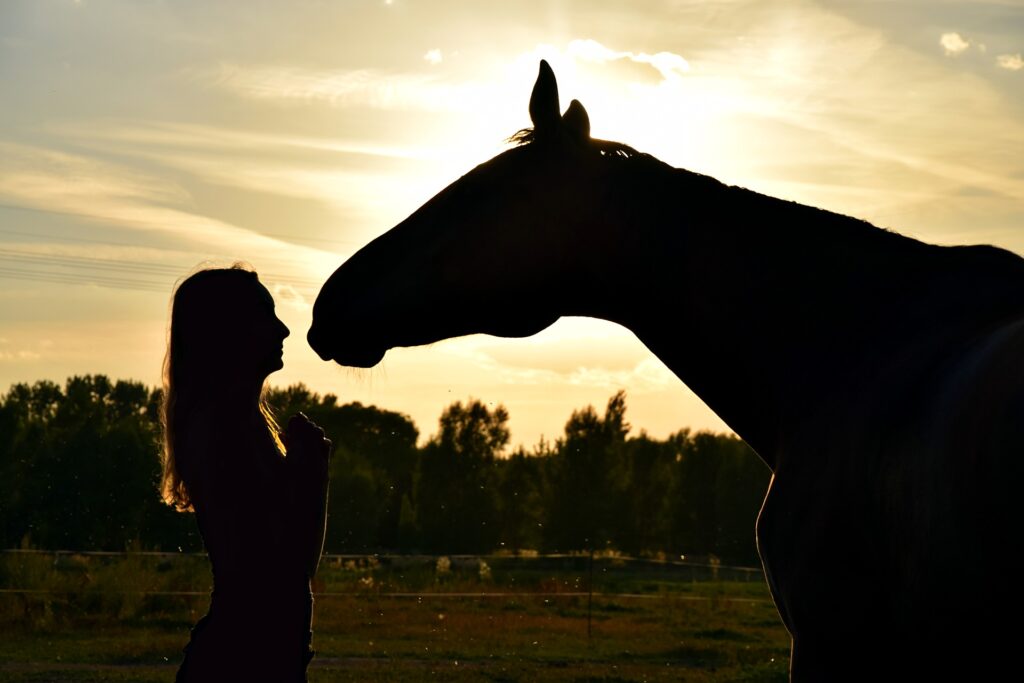
Conclusion
Horseback riding offers a multitude of benefits for both the mind and body, and when approached with mindfulness, it becomes an even more transformative experience. By embracing the principles of mindfulness and incorporating mindfulness practices into your riding routine, you can deepen your connection with your horse, enhance your mental and emotional well-being, and improve your overall physical fitness and coordination. So saddle up, be present, and embark on a journey of mindfulness and self-discovery through the incredible world of horseback riding.
